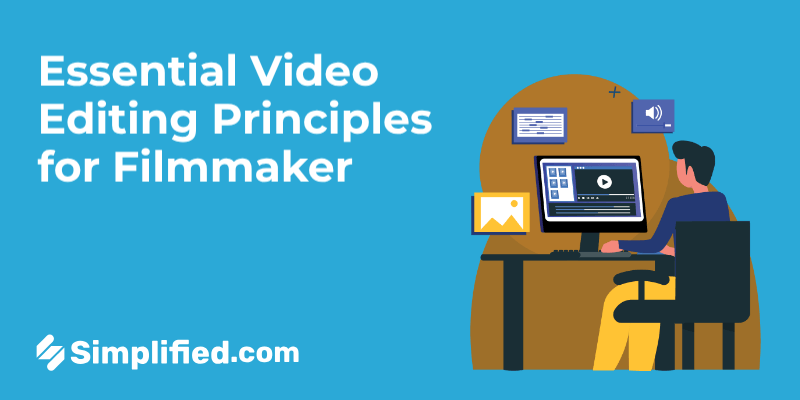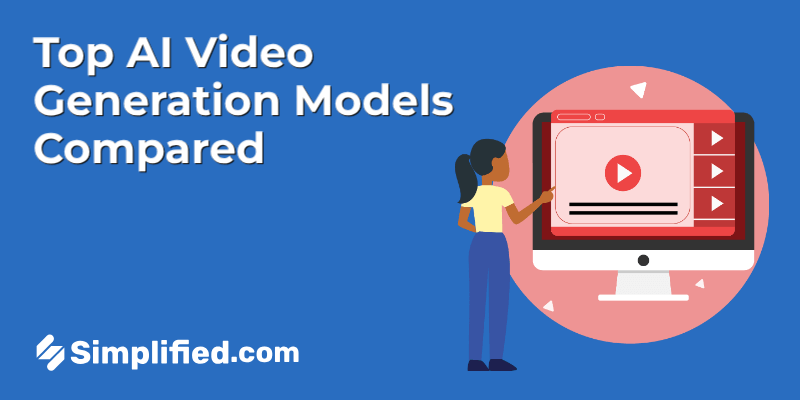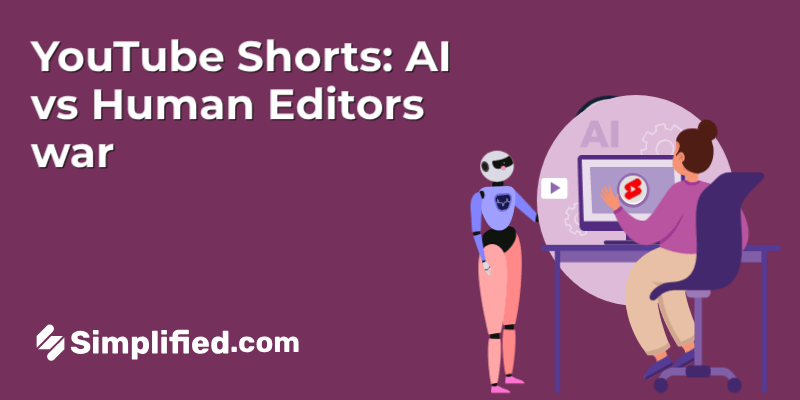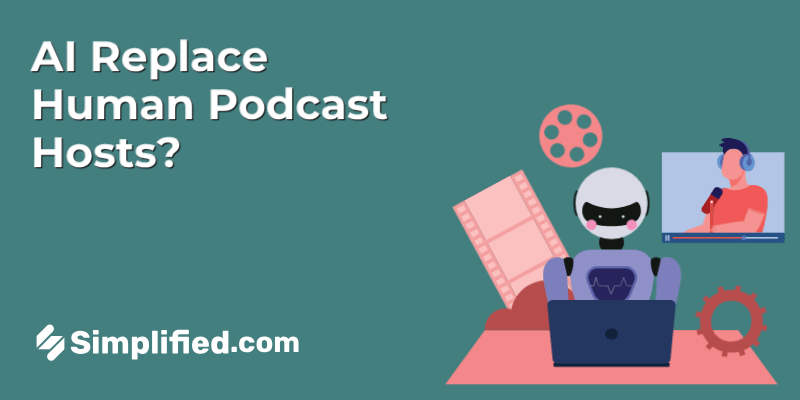
The average time that a person can focus on one thing has dropped from 2.5 minutes to approximately 45 seconds.
This shrinking attention span has compelled marketers across the globe to embrace impactful and immersive videos that quickly capture the user’s interest. In fact, statistics claim that online videos have a massive audience reach of 92% worldwide. Huge, isn’t it?
That said, video creation is no easy feat. It involves a lot of effort, from persuasive script writing to the tedious tasks of editing, scene composition, and color correction. Thankfully, artificial intelligence (AI) technology is making the process easier than ever.
AI tools like Simplified AI video generator have come up that can now handle everything – from scriptwriting and storyboarding to editing and even post-production, making them a prominent solution for the video production industry.

Today, we’ll take a closer look at how AI is redefining the video creation process along with some actionable steps to help embrace AI and elevate your video marketing strategy.
Introduction of AI in Video Creation
Video creation has always been a time-consuming process. It typically involves a team of creative individuals who come together to turn a concept on paper into a comprehensive video through scripting, storyboarding, directing, editing, and post-production tasks. A video of a mere 2 minutes is likely to have taken weeks, if not months, to create behind the scenes.
However, with the arrival of generative AI, this entire process has shortened significantly. Now, creating a video of 2 minutes is likely to require a few prompts by a single person. Sounds brilliant, isn’t it?
Generative AI is a revolutionary technology that produces new and original content from a vast library of algorithms and data. This includes text, images, music, and videos.
Video professionals can leverage generative AI to develop compelling scripts, compose background music, generate voiceovers, and much more – all in seconds. This has altered the video production workflows drastically.
Here is an incredible example of an AI-generated video that showcases Avatar-style aliens in sci-fi-inspired natural landscapes.

Using AI for Various Aspects of Video Creation
The rising use of AI tools in video production is notably disruptive. With these tools, professional video creators can easily streamline their workflows, boost accuracy, and bring down the project turnaround time significantly. Production teams can spend more time focusing on the creative aspects rather than accomplishing mundane tasks such as editing.
AI-powered analytic tools help creators understand their audience’s preferences and guide the creation of tailored video content. By tracking website visitors, these tools facilitate video content optimization, enhancing engagement and viewer satisfaction.
Here are some specific areas where AI is positively contributing to video creation:
1. Scriptwriting
Crafting a script that successfully puts your message to the right audience and drives action is an indispensable part of video creation.
The arrival of AI tools for scriptwriting has revolutionized the traditional process, making it much more efficient. These tools leverage natural language processing (NLP) and generation (NLG) to understand the nuances of human language and create compelling and meaningful scripts.
In scriptwriting, AI can help to:
- Generate ideas
- Draft narratives
- Enhance character development
- Create persuasive dialogues
- Suggest plot twists
- Run a spell check, and much more
Consequently, an increasing number of creatives are using AI to spur their imaginations and refine their script narratives.
Simplified’s Script Generator is a brilliant example of this that offers high-quality AI-generated scripts in minutes. The tool asks you a couple of basic questions about your preferred genre and characters. Using that information, it spins a compelling storyline, enabling you to generate meaningful scripts on the go.
2. Storyboarding and Pre-Production Planning
Storyboards are a crucial aspect of the video creation process. They help to visualize the script and chalk out the various scenes, enabling cinematographers to evade potential discrepancies during the actual filming.
AI tools leverage advanced algorithms to quickly analyze a script and generate recommendations for shot compositions and corresponding camera angles.
Additionally, AI tools simplify pre-production by generating new ideas and perspectives. For instance, an AI tool might produce a scene of a man walking through a forest, which could further inspire the director to add additional elements, such as a wild beast, to enhance the story. You can also use these tools to generate original examples of video app design and explore new possibilities.
3. Video Production
Getting to the most exciting stuff- AI has several applications in the video production stage.
Generative AI tools are breaking into video generation based on prompts such as text, image, or video prompts. With the right prompts, these tools have the potential to quickly generate high-quality and photo-real videos.
Additionally, many AI tools are available that can automate various aspects of video production including camera movements, optimal scene composition, etc., resulting in visually appealing footage.
Simplified Image to Video presents a great example of an AI tool that enhances video production by turning generic stock photos into cinematic videos. It lets you create immersive explainer videos, product demos, or social media teasers, all using static images.

Image: Source
4. Post-production and Video Editing
AI assists in post-production and video editing by automating all mundane and time-consuming tasks. From piecing multiple clips together to adding transitions and sound effects, AI tools can automate multiple aspects resulting in cohesive and impactful videos.
For instance, many AI tools use simple prompts to easily add or remove elements and objects in the video background. Such tools automate tasks that would otherwise require extensive manual editing, saving the video editor’s valuable time.
Additionally, AI-powered expedites the editing process by quickly detecting and choosing the best footage based on scene composition, focus, and lighting. This eliminates the need for editors to sift through large amounts of footage. The tools also help to optimize elements such as sound design and color grading to boost the final product’s overall quality.
Many AI screen recorder tools are also available that include features like automatic captioning and transcription. These features can improve the accessibility of your videos for viewers with hearing impairments or those who prefer to consume content with captions.
5. Dubbing and Voiceover
AI can now also help with dubbing and voiceovers, enabling video creators to enhance their video content and reach a wider audience.
Simplified’s Transcript feature lets you translate your videos into your desired language without any hassle. Our Subtitles Generator also enables you to create and personalize subtitles and enhance engagement on your videos.

Image: Source
Moving on, AI-powered text-to-speech solutions have come up as powerful tools for voiceovers. AI-generated voiceovers provide several benefits in terms of speed, consistency, and customization. Video creators can create AI voiceovers by customizing parameters such as accent, pitch, and tone to align with every video’s specific style. All of this can be a matter of minutes, a process that typically takes hours with human voice recordings.
6. Video Publishing and Distribution
Once your video is ready, you need to publish it to the right platforms for it to be seen. For that, you need your video metadata and SEO on point.
For beginners, this might feel a bit overwhelming- crafting persuasive titles, descriptions, accurate captions, transcripts, and more. But thankfully with AI, all this becomes a piece of cake. Many AI tools do a great job at generating relevant titles, SEO-optimized descriptions, and even social copy to promote your videos online.
Video SEO is another important aspect that optimizes your video for search engines. This involves adding the appropriate phrases and keywords to the metadata so search engines can find and rank your video.
7. Video Upscaling
Video upscaling is the process of expanding and enhancing the video footage. Traditionally used upscaling techniques resulted in larger but blurred images of lower quality.
However, with AI tools, video upscaling quality has drastically improved. Now, the creator’s upscaled videos include highly realistic and clearer images than ever before.
AI tools use an advanced AI algorithm to detect low-resolution patterns, textures, and details, and turn them into high-resolution images, creating vivid upscaled videos.
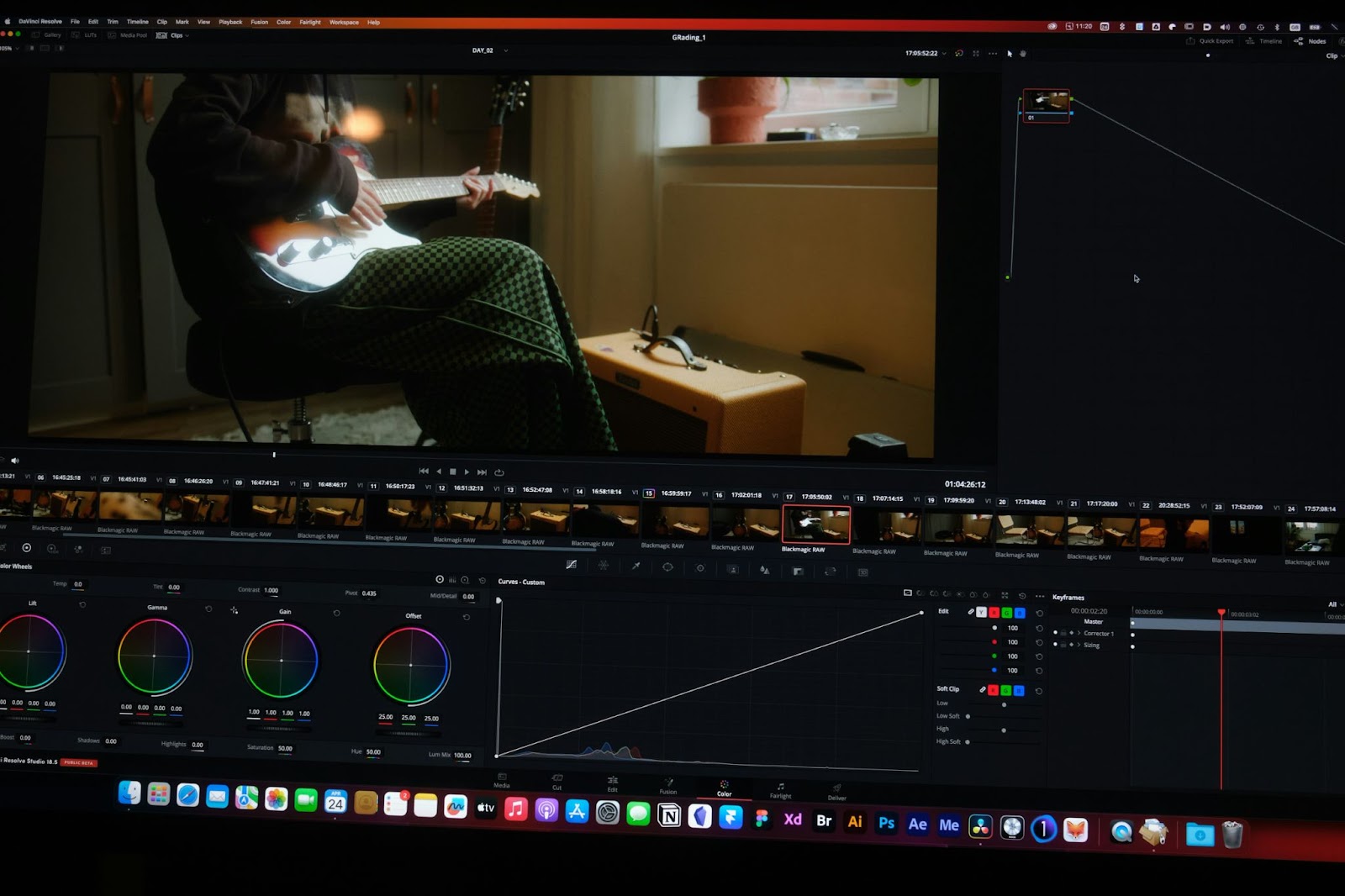
Notable Examples of AI-Generated Videos
Let’s look at some real-world examples and examine how video creators across the world are leveraging AI tools to power video creation.
1. Taste of Duality – AI-Generated Short Video

This is an impressive and highly cinematic fantasy teaser that feels dark and whimsical. Although there is a lot of room for improvement, the video beautifully demonstrates the power of AI with the use of floaty fabrics and waterfalls. It shows that the right use of AI tools can certainly empower video creators to better explore their creative aptitude and expression.
2. The Great Catsby – AI-Generated Movie Teaser

This is another great example of a movie trailer created by using Runway’s Gen-2. Gen-2 is a text-to-video tool that enables users to generate original videos by simply entering a text prompt. This video also demonstrates AI’s potential and how it can be used for turning paper concepts into tangible videos in no time.
Best Practices for Using AI in Video Creation
The use of AI in video creation has also raised some ethical concerns. Because AI algorithms are only as accurate as the data they are trained on, there is a risk that the technology may unknowingly perpetuate bias or faulty information. Additionally, investing in inadequate AI infrastructure can make it difficult to process large amounts of data quickly and efficiently, which may hamper video creation.
Therefore, if you add AI to your video creation process, make sure to adhere to these best practices. This will ensure the best use of AI tools to boost creativity and protect your brand.
1. Carefully combine human skills and creativity with AI competence to automate the tedious parts of the video creation process.
AI tools can help you brainstorm new ideas. But you should entirely rely on them to draft unique narratives that align with your goals. Instead use these tools to automate the most tedious process of video creation, such as color grading, removing background, adjusting audio levels, creating transcripts, etc.
2. Fact-check every aspect of AI-produced video content and review for brand guidelines and quality.
No AI tool can give a video that is ready to publish without review. Carefully review every draft and adjust as needed. For instance, if you are using AI-generated voiceovers, double-check to ensure everything is pronounced correctly- especially individual or business names.
3. Understand the basics of prompt engineering and improve your AI prompt writing skills
Most AI tools allow you to create videos and animations by simply entering text prompts. Learning how to input the correct prompt can help you make the best use of AI tools. For instance, if you start with “Please fill color in the background” as the prompt, you may not get the desired output. Be as detailed as possible. Try “Please fill in the background with a giant wheel ride and some children walking in the distance.”
4. Use reputed AI tools that offer well-documented technology, security, and data sources.
There is a massive proliferation of AI tools for video creation. Make sure to vet all the new tools before you sign up for a subscription-based payment plan. For instance, Simplified’s AI Video Generator is an efficient tool that lets you generate lifelike videos with multilingual capabilities in four easy steps. You can create customized videos with on-brand visuals to easily captivate a diverse audience.
Conclusion
The integration of AI into the video creation industry is bound to have transformative impacts. From automating tedious and repetitive tasks to upscaling video quality and offering compelling scriptwriting, AI-powered tools are empowering the video industry with newer capabilities.
However, striking a balance between human creativity and the use of AI tools is crucial. It must be understood that AI is not here to replace the human touch altogether. Its true power lies in effectively boosting the creative process, freeing up precious time for video creators to focus on the creative aspects of video creation. This will result in the production of highly impactful and engaging videos.







